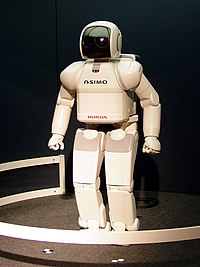
Photo from wikipedia
As the folks behind IEEE Spectrum's robotics blog, Automaton, we were thrilled when Robotis sent us a review unit of its TurtleBot3. This little robot is designed to provide a… Click to show full abstract
As the folks behind IEEE Spectrum's robotics blog, Automaton, we were thrilled when Robotis sent us a review unit of its TurtleBot3. This little robot is designed to provide a platform for people looking to get their feet wet with the Robot Operating System, or ROS. ROS is popular with academic researchers and industrial developers, but its complexity can be daunting. . The TurtleBot3's predecessor, the netbook-based TurtleBot2, is still a totally decent ROS platform. But the TurtleBot3 takes advantage of a new generation of low-cost computing and sensing hardware: The platform stuffs a full ROS installation into the absolute smallest and cheapest mobile robot that can support it, while maintaining capability and convenience. . Robotis actually sent us two units, as the TurtleBot3 comes in two flavors, dubbed the Burger and the Waffle. The Waffle offers more advanced features, but it's built around Intel's Joule compute module, which now looks to be on Intel's chopping block. So here we'll be focusing on the US $549 Burger, which is built around the Raspberry Pi 3. . As noted above, ROS presents a tough learning curve. This is not the robot to buy if you just want some fun; this is the robot you buy if you are willing to put in the time and effort to learn ROS alongside advanced robotics and computer science concepts.
Journal Title: IEEE Spectrum
Year Published: 2017
Link to full text (if available)
Share on Social Media: Sign Up to like & get
recommendations!